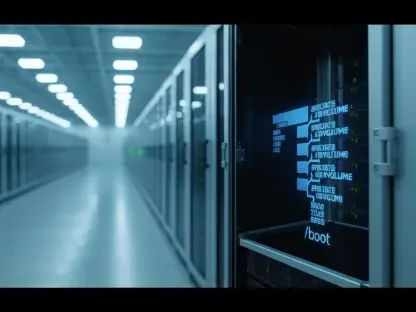Jaguar Land Rover (JLR), a prominent name in luxury automotive manufacturing, faced the growing specter of cybersecurity breaches, with a recent attack by the HELLCAT ransomware group representing a significant cause for concern. This incident starkly illustrates the severe risks that even well-established organizations face from sophisticated cyber threats. Delving into the specifics of the breach, the methodologies of the threat actors, and the subsequent fallout provides valuable insight into contemporary cybersecurity challenges.
Breach Specifics and Immediate Fallout
The HELLCAT ransomware group’s assault on JLR resulted in the exposure of a considerable amount of sensitive data, including internal documents, development logs, proprietary source codes, and employee information like usernames, email addresses, and time zone details. This data compromise involved the release of over 700 documents and around 350 gigabytes of additional data, bringing the company’s information security vulnerabilities to the forefront. The ramifications were widespread, causing not just internal disruptions but also raising alarm over potential identity theft and phishing attacks targeting JLR employees.
The breach’s repercussions included potential intellectual property theft, where proprietary source codes could be used by malicious entities to bypass security mechanisms, create counterfeit products, or gain undue competitive advantages. Customer tracking data falling into nefarious hands also presented genuine risks of targeted attacks on the firm’s valued clientele. The operational disruptions from such a breach shift focus to the immediate and long-term measures needed to protect organizational integrity.
Attack Methodology
HELLCAT’s sophisticated approach relied on exploiting weaknesses in Atlassian Jira instances using stolen credentials. This reliance on compromised credentials, often acquired through infostealer malware, allowed the group to initiate their attack chain. Once inside the network, HELLCAT’s operators utilized spear phishing emails, sending these to targeted employees to gain more extensive access. This method bypassed traditional security measures and gained unauthorized entry.
After achieving entry, HELLCAT deployed PowerShell scripts designed to evade detection, maintain persistence, and execute command-and-control payloads like SliverC2. These tools enabled continuous remote access, ensuring that the hackers maintained control for an extended period. The methodology highlights a rising trend where precision, patience, and tailored attack strategies pose substantial challenges for even the most secure organizations. By leveraging seemingly innocuous yet potent software exploits, HELLCAT exemplified how modern cyber threats necessitate enhanced vigilance and advanced defensive mechanisms.
Rise of Infostealer Malware
The HELLCAT breach underscored the escalating threat that infostealer malware constitutes to organizational cybersecurity. Infostealer malware functions by harvesting credentials from infected systems, providing attackers access to critical data and infrastructure. This nuanced form of cyber intrusion demonstrates the ease with which attackers can pivot within an organization’s network once they have valid credentials. The consequences for JLR were severe, as attackers melded infostealer tactics with targeted spear phishing to expand their foothold within the firm’s systems.
Addressing these sophisticated intrusions necessitates proactive measures, including the implementation of multi-factor authentication, frequent credential rotation, and vigilant network monitoring. Enforcing strict access controls and conducting regular security audits can significantly reduce the risk posed by stolen credentials. As illustrated by the aftermath of the breach, complacency in credential management can have dire consequences, underscoring the need for a robust, adaptive security culture.
Future Considerations and Enhanced Cybersecurity Measures
The breach enforced the critical need for companies like Jaguar Land Rover to reassess and fortify their cybersecurity defenses in the wake of increasingly adept ransomware groups. Companies must remain vigilant against evolving threats, employing advanced threat detection and response systems capable of identifying and mitigating not only existing but also emergent attack vectors. Future strategies should integrate behavioral analytics and automated response mechanisms that provide real-time defense against unauthorized access attempts, significantly enhancing organizational resilience against cyber threats.
Cybersecurity education and awareness programs are also paramount, ensuring employees recognize and respond appropriately to phishing attempts and other social engineering attacks. Moreover, cultivating a culture where prompt reporting and incident response can be swiftly executed is crucial in minimizing the impact of breaches. Building partnerships with expert cybersecurity firms for continuous external assessments and intelligence sharing can further amplify a company’s defense mechanisms, keeping them informed and prepared against advanced persistent threats.
Conclusion
Jaguar Land Rover (JLR), a renowned brand in the luxury automotive industry, has recently encountered a significant cybersecurity challenge. The HELLCAT ransomware group launched an attack on the company, underscoring the escalating risks even prestigious corporations face from advanced cyber threats. This event highlights the pressing need for robust cybersecurity measures within large organizations. To comprehend the current landscape of cybersecurity, it is essential to explore the details of this breach, the tactics employed by the cybercriminals, and the repercussions that followed. Understanding these aspects sheds light on the evolving nature of cyber threats and the importance of vigilant cybersecurity strategies to protect valuable assets and sensitive information. Such incidents serve as a wake-up call for companies across various sectors to continually enhance their defenses against these ever-present digital dangers, ensuring they are prepared to counter and mitigate future attacks.









